Cat Island, Little San Salvador & Eleuthera
13th - 25th April 2005
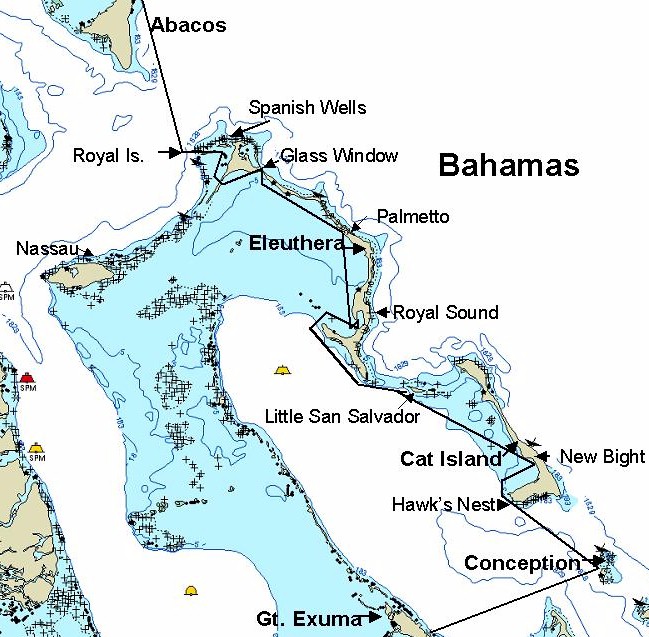
The conch had to be prepared for cooking by trimming and skinning them. It was disconcerting chopping them up when they were still looking at you, so we won't be making a habit of it! Conch were usually served either raw in conch salad or cracked, which meant tenderised by using a tenderising hammer (or in our case a large piece of 2 x 4 lumber!) and then fried in batter.
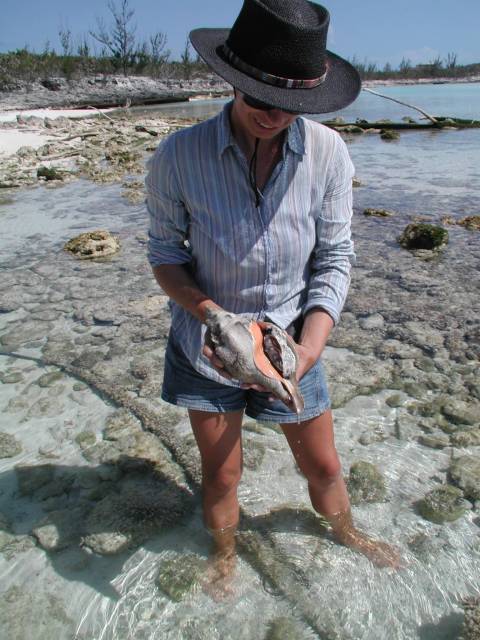
A large conk and a large conch!
(This one escaped the pot as it was an unusual type we hadn't seen before, so we put it back).
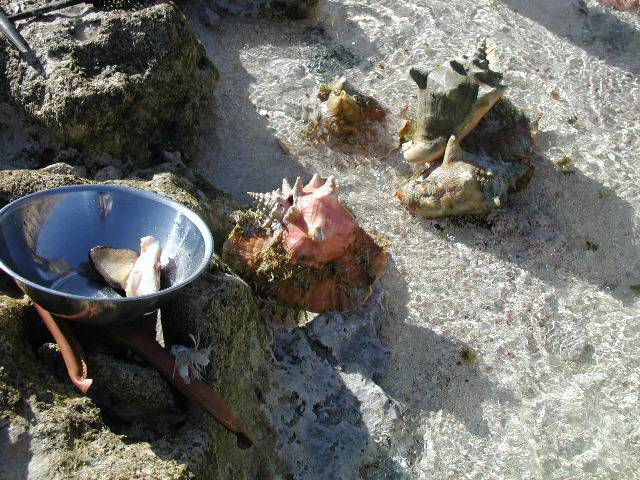
Conch - before and after
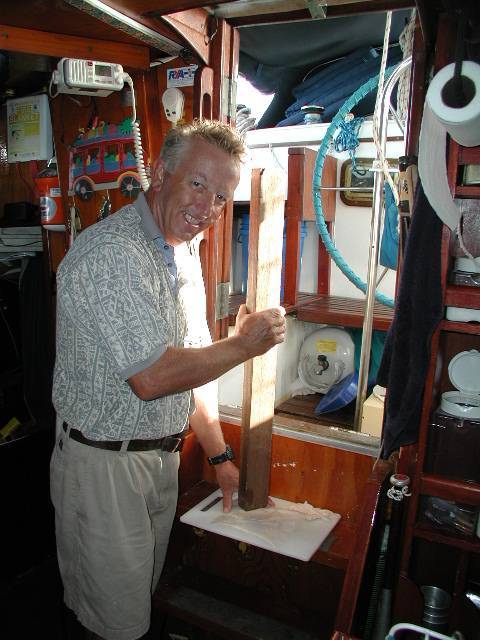
Phil "cracking" the conch with a small tenderising hammer!
The Hawk's Nest marina kindly provided bicycles for their guests because the resort complex was quite large, however their bikes were of the fixed wheel, no brakes variety. We opted instead to use our own mountain bikes. Not surprisingly, one of the other marina guests preferred that type of bike too and we returned to the bike rack outside the office to find that Christine's bike had gone off with another cruiser! It was quickly retrieved and from then on our bikes were locked to prevent the same thing happening again. If resort guests were arriving by light aircraft, you had to be swift on your wheels as the bike route to the main complex from the marina went straight across the runway!
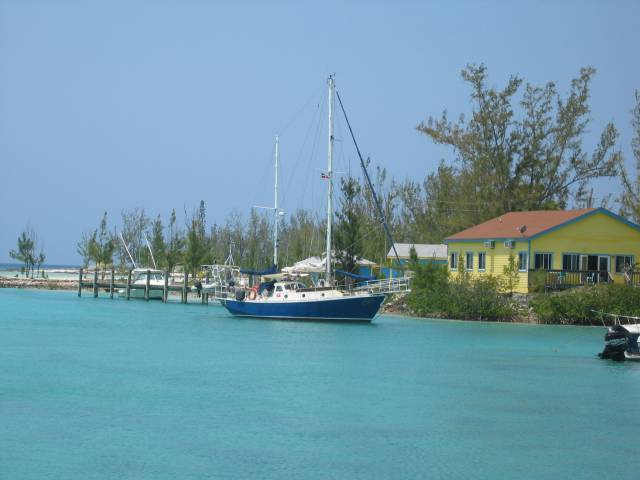
Anju scampering into Hawk's Nest marina with inches to spare under her keel!
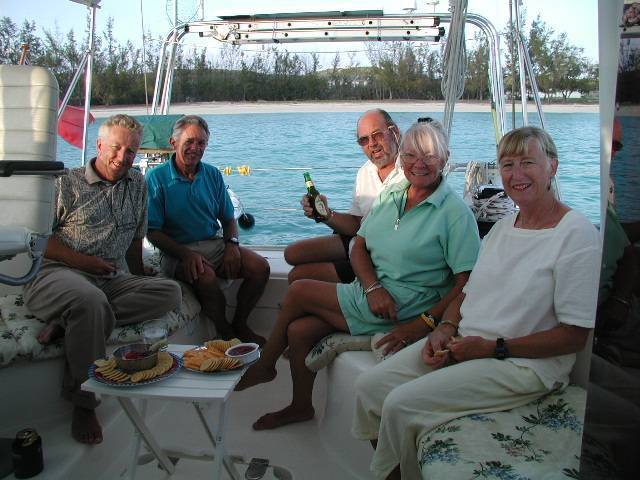
Phil, Pat, Chris, Vivian and Liz preparing for a night on the town in New Bight, Cat Island.
Our next stop was in New Bight on Cat Island were we had a joint dinner at the Bluebird Restaurant to celebrate the birth of Phil's new granddaughter, Polly. The two sisters who jointly ran the establishment, taking turns on monthly rotation to be chef or hostess, kept us well fed and entertained. By the end of the evening we were all dancing to local Rake and Scrape music. Luckily we hadn't over-indulged in the local brew as we were up at one a.m. putting a bridle on our anchor chain to pull Anju around into the swell to reduce the rocking motion, so we could get some sleep. All the good food we'd eaten gave us the energy to walk up the Bahamas highest hill (a whole 65 m high) the next morning, to visit the Hermitage built on the top by the island's famous Father Jerome, his retirement home once he was finished building hurricane-proof churches for the inhabitants of several other islands..
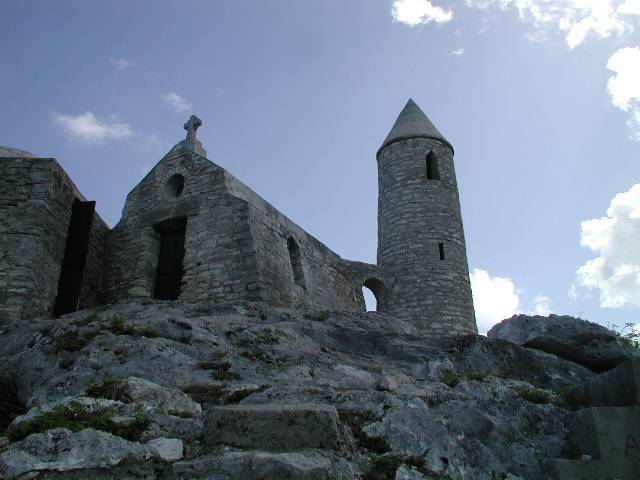
Father Jerome's striking retirement home, The Hermitage on Cat Island. Phil tried out the sleeping quarters which were even smaller than those on board Anju!
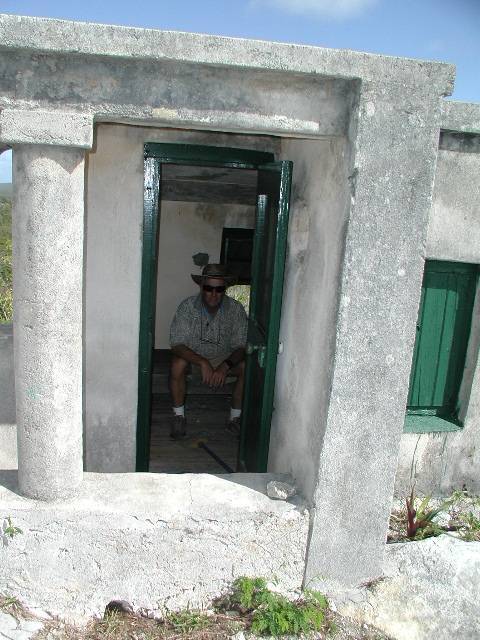
Our next anchorage was quite a contrast, a luxurious beach resort on the island of Little San Salvador. It was owned by the Holland America Cruise Line and used as a beach playground by their cruise ship passengers. A cruise ship was visiting when we arrived and we were politely requested to stay aboard our yachts until the ship left at 4 p.m. before heading ashore to explore the then deserted and somewhat surreal surroundings. The island had no settlements other than the resort. The few staff who lived full time on the island assured us they never got bored because they could use their free time between cruise ship visits to go fishing. They must have more luck fishing than we were having!
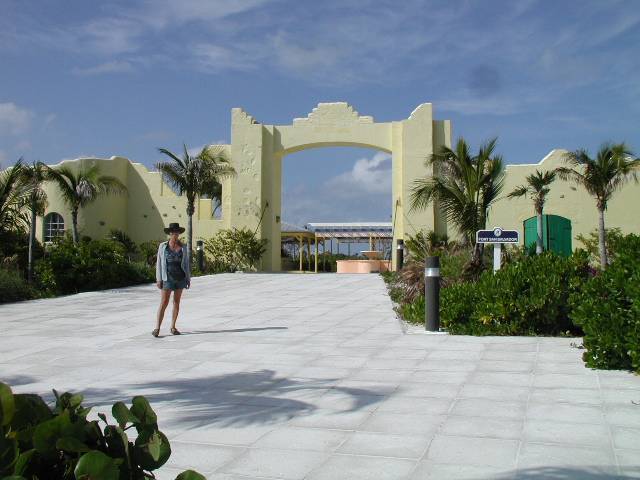
The deserted fake fort at the deserted beach playground on Little San Salvador
In Rock Sound we were invited to share one of Catspaw's three catches of the day, a grouper. We were becoming despondent at our fishing failure but at least we got to eat some tasty fresh fish!
The Rock Sound settlement was famous for its large Ocean Hole, an area of seawater trapped in an inland pond supplied with tidal water presumably through an underground tunnel. Whilst in Rock Sound we found that the Bahamas were cut off from the rest of the world due to a strike by the local telephone company workers, leaving international phone calls not connecting, internet access unavailable and even credit card transactions impossible to process. Oh well, luckily nothing much ever happened in the Bahamas that we urgently needed to tell people about.
Next day we anchored in Palmetto Bay further north up the coast of Eleuthera, where the Government had kindly provided excellent new mooring buoys, free of charge, for visiting boaters. During our walk from the west side of the island over to the Atlantic coast, we noticed again that the homeowners of Eleuthera seemed to be much more house proud than those in other islands we'd visited and their gardens were often beautifully cultivated.
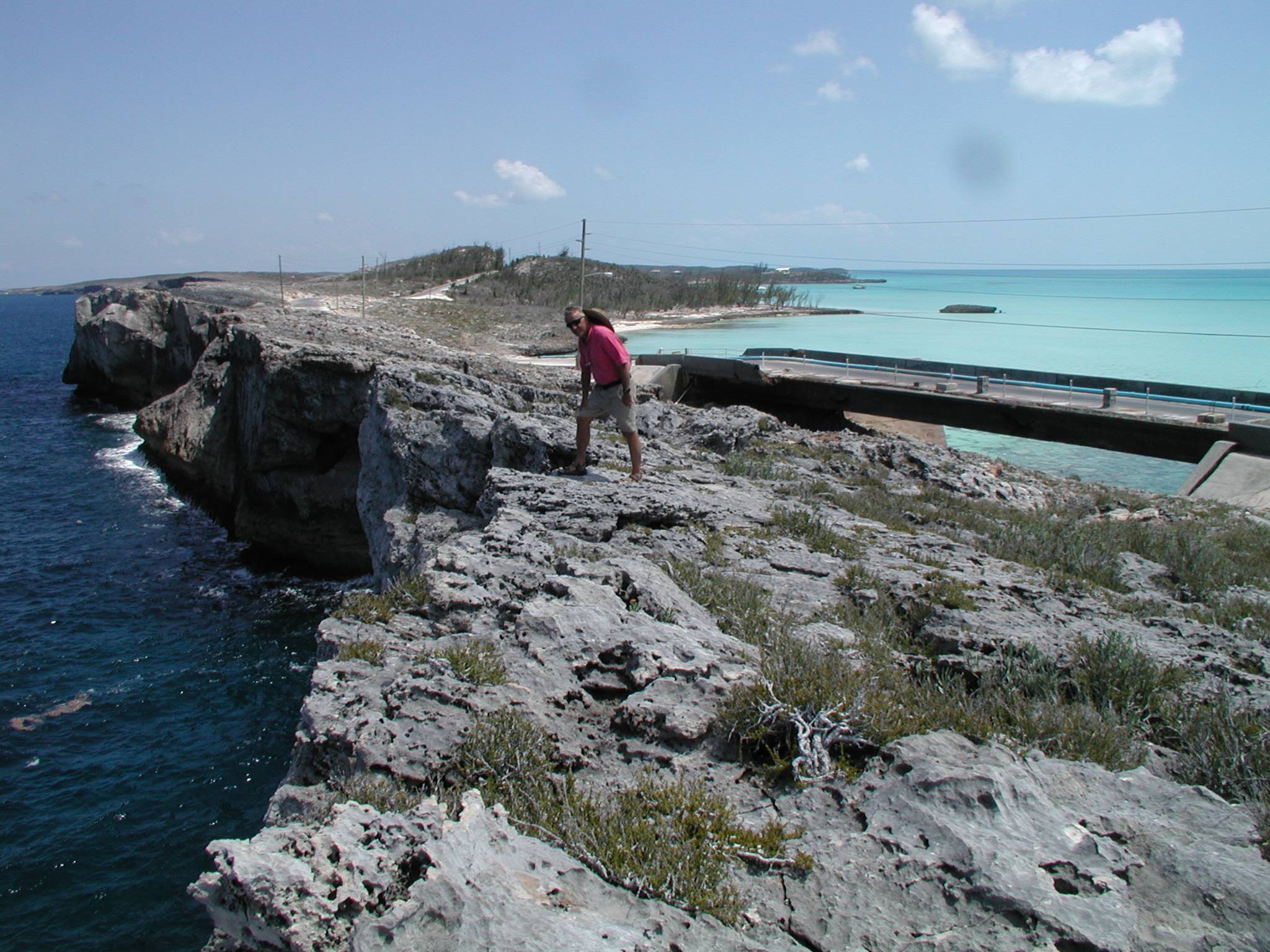
Phil looking at the Glass Window - don't loiter on the bridge!
The glass window was a good spot from which to leave to pass through the narrow Current Cut to reach Spanish Wells at the north of the island. We were careful to time our passage through the Cut carefully, to ensure that the tide wasn't against us and were rewarded by surfing through the cut at over seven knots. Friends on a catamaran arrived an hour too soon and struggled through at just over one knot against the tide.
Our final stop before heading further north to the Abaco islands was in the well-protected anchorage of Royal Island, where we explored the ruins of abandoned buildings ashore and walked the many trails, being bombarded by the island's leaping lizards which we startled on our way!
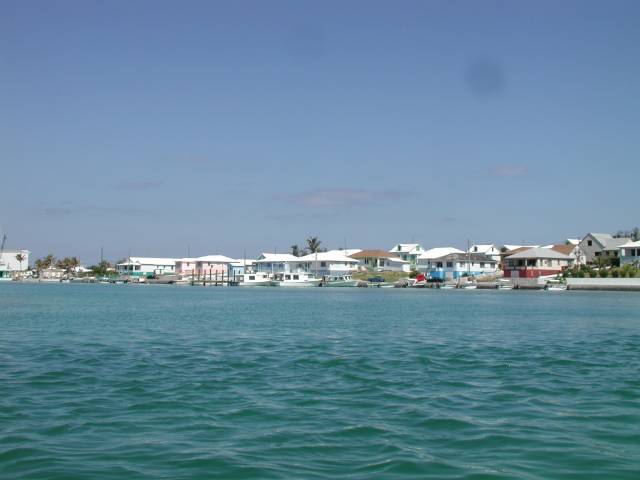
Entering the channel through Spanish Wells by dinghy
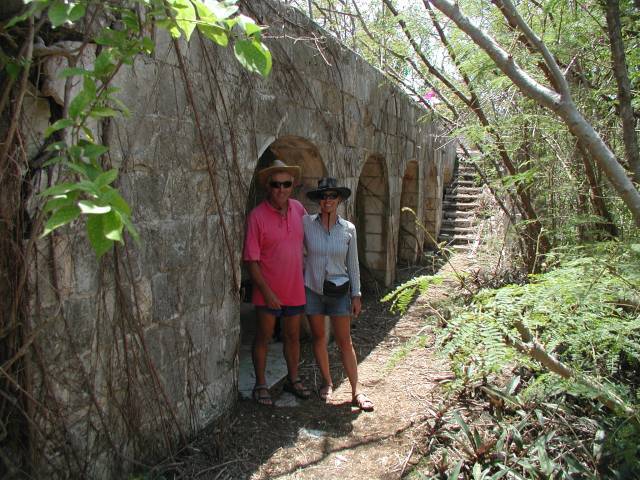
Exploring the ruins on Royal Island
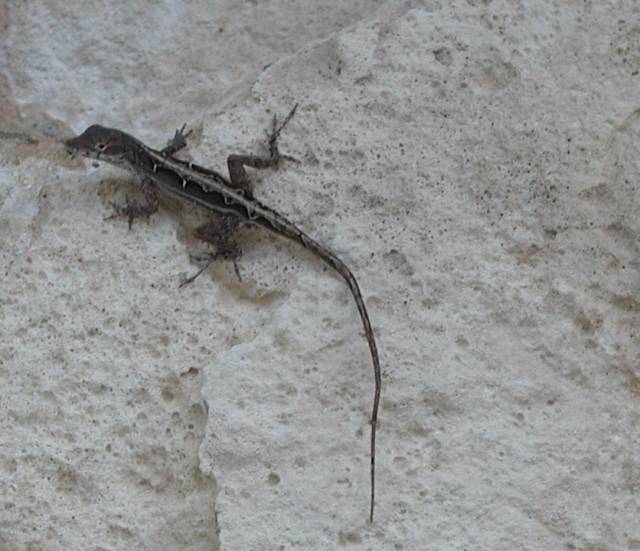
Everybody duck! Low flying lizards ahead!